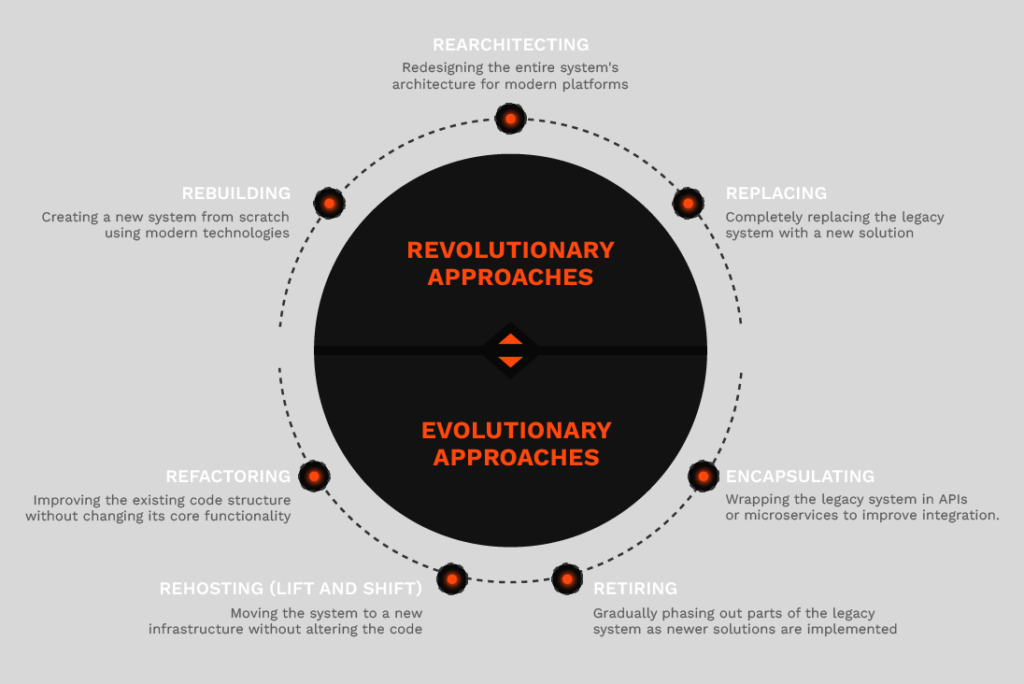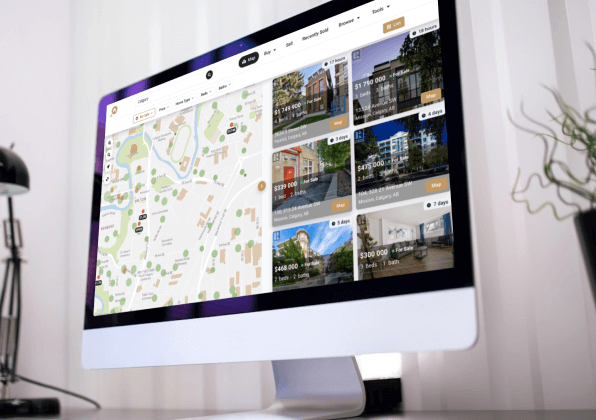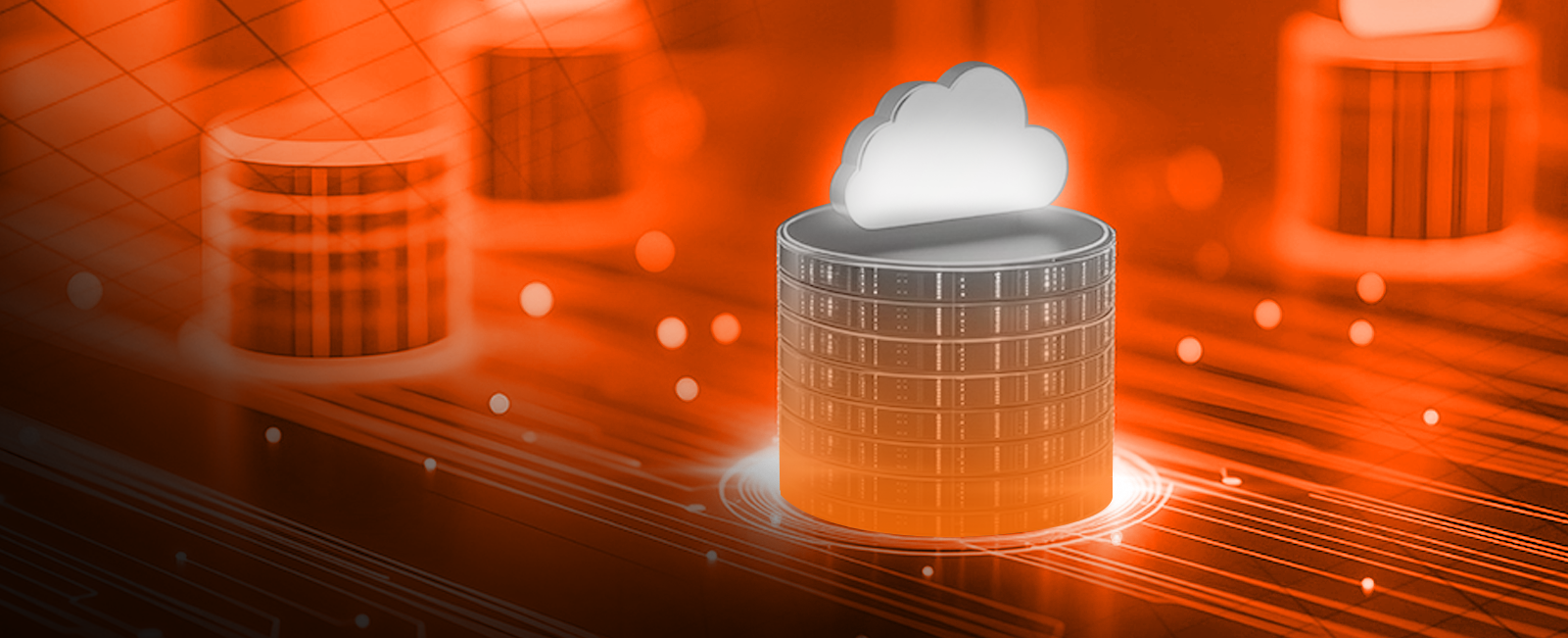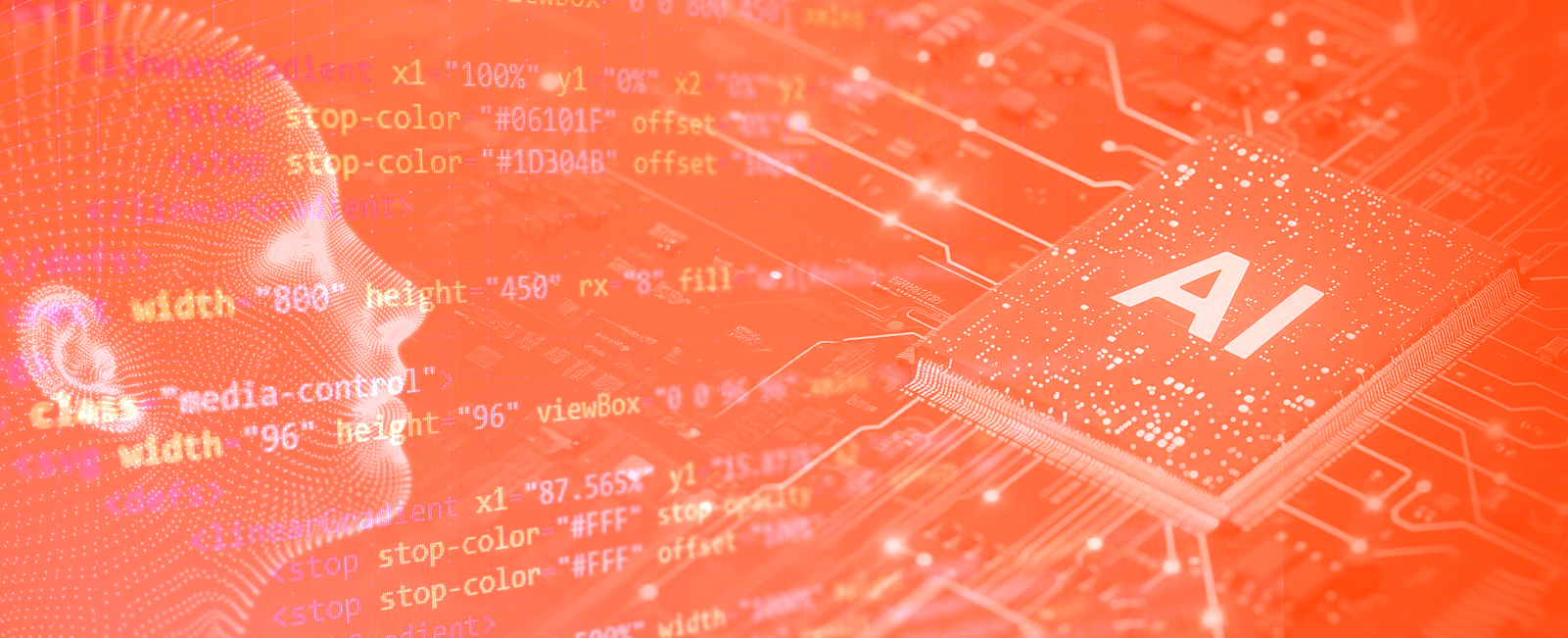As AI becomes more capable with each update and quantum technology promises to crack even the latest cryptography in seconds, technology is evolving at an unprecedented pace. This shift directly impacts customer expectations for SaaS companies, leaving the upper management faced with an urgent decision: what to do with their legacy systems. In this article, we have technology transformation explained. Keep reading to learn how to implement digital transformation in your business agenda without much fuss.
So What is Technology Transformation and Why Do You Need It?
Legacy systems are built sometimes decades ago on obsolete programming languages and outdated hardware, and are often categorized as ‘expired’ technologies. They are incompatible with new technology and lack the functionality needed to stay competitive in 2025. Next-gen tech assets are now leading the charge. Instead of focusing on scalability, businesses find themselves spending about 80% of their IT budget just to keep these systems running, constantly fixing urgent issues that never seem to go away.
Modernizing your outdated software becomes important when your current technology can’t integrate with new products or services, lacks modern functionality, or is vulnerable to security breaches. Outdated technology exposes your business to significant risks, especially in sectors like fintech or healthcare, where compliance and risk management are heavily regulated. Failing to modernize can leave your systems non-compliant, leading to security vulnerabilities and legal liabilities.
Other red flags include slow performance, high maintenance costs, and poor user experiences. Systems that can’t deliver a seamless experience across platforms repel customers.
Let’s go through the various types of legacy modernization and discuss the latest trends to help you determine which path is right for your business. Especially if you’ve already decided that the “don’t fix what’s not broken” approach no longer aligns with your company’s best interest.
Technology Transformation Approaches: From Subtle Tweaks to Radical Solutions
Legacy modernization approaches generally fall into two main categories based on the transformation strategy: revolutionary or evolutionary. The choice depends on the extent of structural changes applied to the system. Revolutionary approaches involve significant overhauls, while evolutionary methods focus on step-by-step improvements.
When considering technology transformation options, cost, value, and affordability also come into play. While approaches like rebuilding offer the most flexibility and customization, they often come with high upfront costs.
Read our blog on the hidden costs of legacy system maintenance for more insight.
On the other hand, evolutionary approaches like rehosting or encapsulating can be more affordable initially, but less scalable long-term.

Rehosting
Rehosting, often called “lift and shift,” means moving an existing system to new infrastructure without changing its core architecture. It’s a quick modernization method. Since rehosting doesn’t require code changes, minimal downtime is involved. It’s especially useful for companies that want to migrate physical data repositories to the cloud without re-engineering the entire system.
Refactoring
Refactoring means changing a system’s code to improve its performance and functionality. This approach taps into cloud-native features like auto-scaling and improved resource management, without needing a full rebuild. It makes systems more flexible, scalable, and easier to maintain. It’s a middle-ground between basic rehosting and a full overhaul, providing long-term benefits at a lower cost than rebuilding. It also supports compliance and risk management by using modern code practices. However, refactoring requires a big investment of time and resources.
Replatforming
Replatforming takes rehosting a step further by making minor tweaks to the system during the migration process. Unlike rehosting, this approach might involve small code changes to optimize the system for its new environment. It balances cost and performance improvements. Replatforming is a good choice for companies wanting system optimization without major redevelopment. However, it offers fewer improvements than full modernization. Small tweaks may not address deeper issues.
Rebuilding
This is a time-consuming and expensive approach, but it allows you to re-engineer outdated software and fully meet your current and future business needs. By starting from the ground up, you can design a system that is aligned with modern technologies and customer demands. Rebuilding offers all the flexibility you need, but it comes with a high cost and takes time. It can also disrupt business operations during development.
Replacing
Sometimes, the best way to modernize a legacy system is to replace it altogether with a new, off-the-shelf solution. Though disruptive and costly, replacing a system allows you to adopt the latest technology without old limitations. It’s also expensive, requires staff retraining, and involves a lengthy transition process.
Retiring
Retiring involves letting go of parts or the entirety of a legacy system when it is no longer useful or needed. Instead of modernizing or maintaining an obsolete system, it allows you to focus on new, more efficient technologies. This approach reduces operational costs and frees up resources for more important business needs. It also mitigates the risks that come with running outdated and insecure software. It needs to be done carefully, as it can cause disruptions if the system is still in partial use.
Encapsulating
Encapsulating, or wrapping, means integrating your legacy system with new technologies through APIs or microservices. This approach preserves the core functionality of the legacy system while also letting it interact with more modern services. It’s a low-risk, cost-effective approach that extends the life of your software. It won’t address some deep issues of the legacy system though.
Worried that updating your system can disrupt operations? Read how to ensure seamless transition.
Why Now is the Time for a Digital Transformation Strategy
Technology transformation is shaped by multiple trends.
- 5G and Increased Network Speed
Apart from fueling conspiracy theories, 5G is also transforming legacy systems with faster, more reliable connections. With low latency and high-speed data transfer, it supports real-time applications like AR, immersive gaming, and seamless streaming. 5G allows legacy systems to handle more data and offer high-quality services. It changes the way we work, communicate and unwind. This ensures systems are ready for the demands of 2025 and beyond.

- AI and Machine Learning
AI and machine learning impact legacy modernization by automating code analysis, refactoring, and testing processes. These technologies reduce manual workloads and improve system performance. AI-driven automation tools help optimize legacy code for cloud environments. It also improves decision-making and speeds up migration.
- Low-Code Development
Low-code development is emerging as a game-changer in legacy modernization. It allows for faster application delivery with minimal manual coding. According to Gartner, by 2025, 70% of new applications will be developed using low-code or no-code platforms, up from just 25% in 2020. This trend allows businesses to rapidly modernize legacy systems and build new features without a complete overhaul.
- Augmented Reality (AR) and Virtual Reality (VR)
The use of AR and VR is set to grow in 2025. These technologies are predicted to expand beyond gaming into sectors like education, e-commerce, and healthcare. AR and VR will create immersive experiences that boost user engagement and change how people interact with apps.
- Internet of Things (IoT)
The Internet of Things (IoT) transforms legacy systems by connecting them to smart devices and real-time data. This allows older systems to automate processes and support remote monitoring. IoT integration helps extend the life of legacy infrastructure. For industries like healthcare, manufacturing, and logistics, IoT makes legacy systems more flexible and ready for modern demands. This keeps businesses competitive and open to future innovation.
- Cloud Migration
Moving legacy systems to the cloud remains a core strategy for modernization. Cloud migration provides immediate scalability, cost savings, and access to cloud-native services like serverless computing and microservices. Gartner forecasts that more than 95% of new digital initiatives will rely on cloud-native platforms by 2028. This makes cloud migration a critical trend for businesses seeking to future-proof their systems.
- Containerization
Containerization allows legacy systems to be broken down into smaller, independent services that are easier to manage and scale. Tools like Docker and Kubernetes enable companies to modernize their monolithic applications into microservices, improving agility. In 2023, IDC reported that 85% of enterprises were using containers in production. This trend supports businesses looking to increase deployment efficiency and minimize resource usage.
- DevOps
DevOps continues to revolutionize the legacy modernization process by integrating development and operations teams for more streamlined workflows. This approach fosters continuous integration (CI) and continuous delivery (CD), which shortens deployment cycles and improves software quality. According to a 2023 survey, 49% of companies reported faster time-to-market due to DevOps adoption. DevOps practices are key to ensuring that legacy systems can quickly adapt to evolving business needs.
Our Approach
At UniRidge, we’ve successfully helped businesses with technology transformation across various industries, from fintech to logistics. See how:
We build scalable and reliable products that streamline your business. So, let’s make your bravest tech ideas come true!








